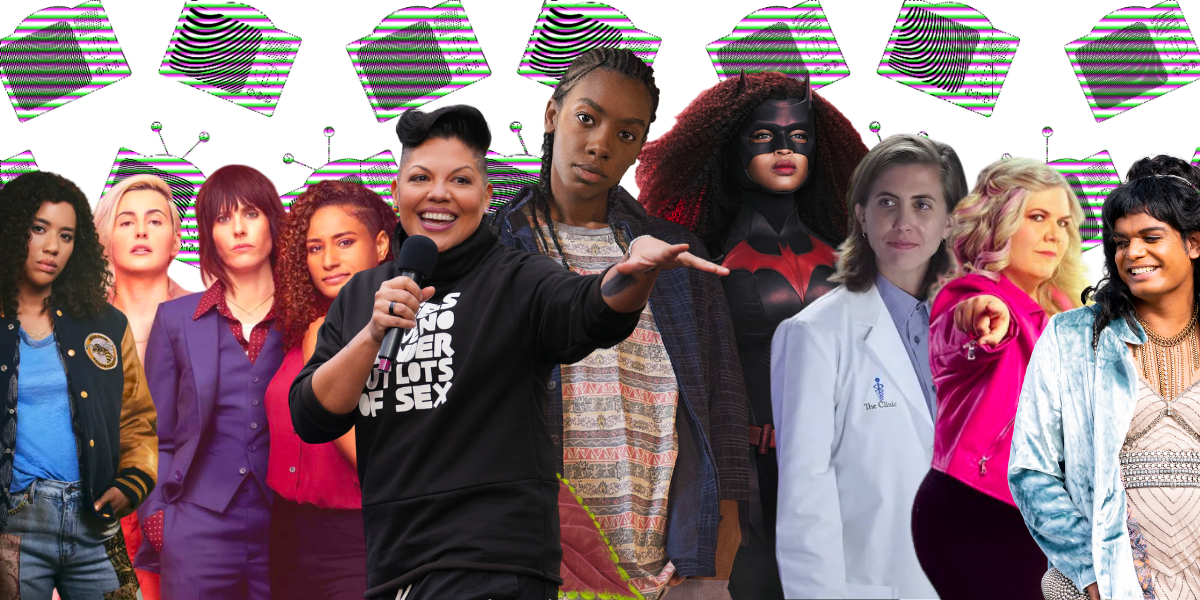After years of roaming the earth listlessly in search of a televised field in which to triumph, lesbians have achieved a remarkable pinnacle in the field of media representation: for the first time in GLAAD’s storied history of reporting on this topic in their annual Where We Are on TV Report, lesbians represent the majority of LGBTQ characters on broadcast television, outnumbering the previous consistent winner of “Gay Men.” For the first time since the 06-07 season, lesbians also represent the majority of characters on cable. However, as in ’06-07, GLAAD attributes this to the prevalence of lesbian characters on a show from ye olde The L Word franchise.
Just a Few Shows Are Doing All The Work: The L Word‘s impact isn’t unusual. handful of shows comprising the majority of any given year’s gains or losses is a pretty typical feature of a Where We Are on TV Report, and there’d be value in looking at the overall percentage of shows with LGBTQ characters, period. The 2010 report noted massive losses for queer female representation, but anybody who hadn’t been watching The L Word wouldn’t have noticed a seismic shift. In the cable analysis section, GLAAD notes that the majority of Freeform’s LGBTQ characters appear on Good Trouble and Single Drunk Female and that FX’s are concentrated on Better Things and What We Do in the Shadows. Furthermore….
Trans Representation Getting Better: There is an increase in the number of trans characters, as well as a “welcome increase in trans characters who appear in a comedy series.” After decades of being used as the butt of the joke, it’s encouraging to see more trans characters making jokes, and sometimes even being lead characters, as in Euphoria, Saved by the Bell and Sort Of.
In recent years, growth in trans representation was carried by Transparent and/or Pose, usually alone, and it’s actually incredibly promising that despite Pose‘s cancellation, the number of transgender characters on cable has only decreased slightly. And that’s actually only if you look at the numbers in a very specific way, which brings us to….
More Non-Binary Characters Than Ever: GLAAD reports 42 transgender characters, including eight non-binary characters, on television overall, but they then note the existence of 17 “additional characters who are non-binary and not transgender.” Detailed later in the report, they explain “If the character is non-binary, but the word transgender is never mentioned, the character explicitly says they are not transgender, or creators confirm the character is not transgender – the character will be counted as non-binary but not counted as transgender.” According to GLAAD, characters falling under this category of “non-binary but not transgender” include characters on Grey’s Anatomy, Feel Good, And Just Like That and The Sex Lives of College Girls.
Hands-down the most difficult part of analyzing LGBTQ+ data of any kind is deciding how to define any of the terms in that acronym — terms that are always evolving and mean different things to different people. Based on GLAAD’s own definition of transgender as “a person’s gender not matching what they were assigned at birth,” it does seem that if we are counting “women who date women” as lesbians regardless of them explicitly saying they are lesbians, we should count “people who don’t identify with the gender they were assigned at birth” as transgender regardless of if they say the word? Relying on characters with notoriously limited screen time and cis writers/creators to label their characters feels… tricky.
But again, this isn’t easy stuff to sort through!! In the Autostraddle community lexicon, we do include non-binary people in the definition of “trans,” so I will be conflating GLAAD’s numbers when I say things like this: there were 25 non-binary characters this year and that’s an impressive leap! As someone who has been maintaining an orderly and updated database of TV characters who are LGTBQ women and/or trans since 2017, this tracks — it’s been a very noticeable rise. Streaming networks seem to be performing best in this regard with14 trans women, 17 non-binary characters and six trans men.
Trans Characters Played by Trans Actors: Of the 42 characters it counted, GLAAD noted 41 were played by trans actors. (This is another tricky thing to count, especially when it comes to young actors!)
Other notable tidbits:
- GLAAD “challenged” platforms to have at least 50% of its LGBTQ+ characters be characters of color, and network television and cable continue to meet that goal, but overall racial diversity of LGBTQ characters on broadcast and streaming increased, while cable saw a decrease.
- Only TWO (2) ASEXUAL CHARACTERS emerged from the ether this year, and one was on the now-cancelled program genera+ion. GLAAD has promised a second asexual character on a streaming series whose details “are under embargo at time of publication.” That’s exciting!
- Bisexual+ characters comprise 29% of all LGBTQ characters on broadcast, cable and streaming, an increase of one percent from last year. Bisexual men remain elusive, with 50 bi+ men out there. There are also nine bi+ non-binary characters, although I’m not sure what that means.
In conclusion, it’s a great thing that our exact demographic continues to see increases in representation! We do hope that as viewing options multiply, that more networks see the value in investing their marketing dollars in various ecosystems long taken for granted, such as websites that enable them to reach the exact audience they require to support the LGBTQ-inclusive content they’re creating. It’s one thing to create the shows, but one must also invest in their success, and it’s sad to see so many of the best shows for queer representation, like genera+ion and Gentefied, get cancelled before their advertising departments have exhausted even their most obvious option. Just saying!







